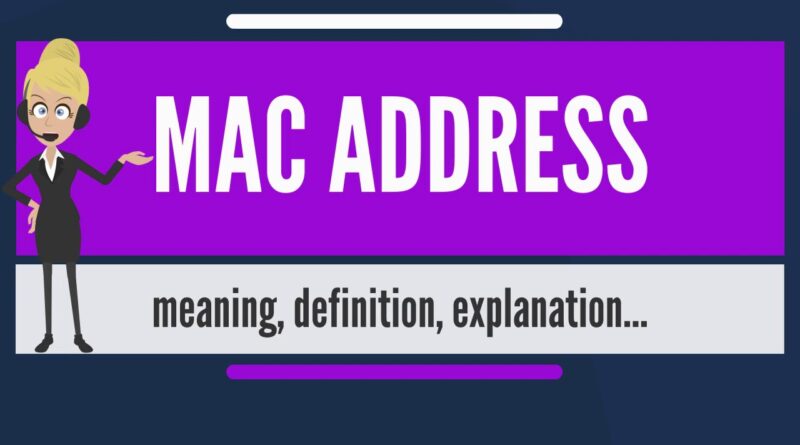What is MAC ADDRESS? What does MAC ADDRESS mean? MAC ADDRESS meaning, definition & explanation
✪✪✪✪✪ http://www.theaudiopedia.com ✪✪✪✪✪
What is MAC ADDRESS? What does MAC ADDRESS mean? MAC ADDRESS meaning – MAC ADDRESS definition – MAC ADDRESS explanation.
Source: Wikipedia.org article, adapted under https://creativecommons.org/licenses/by-sa/3.0/ license.
SUBSCRIBE to our Google Earth flights channel – https://www.youtube.com/channel/UC6UuCPh7GrXznZi0Hz2YQnQ
A media access control address (MAC address) of a computer is a unique identifier assigned to network interfaces for communications at the data link layer of a network segment. MAC addresses are used as a network address for most IEEE 802 network technologies, including Ethernet and Wi-Fi. Logically, MAC addresses are used in the media access control protocol sublayer of the OSI reference model.
MAC addresses are most often assigned by the manufacturer of a network interface controller (NIC) and are stored in its hardware, such as the card’s read-only memory or some other firmware mechanism. If assigned by the manufacturer, a MAC address usually encodes the manufacturer’s registered identification number and may be referred to as the burned-in address (BIA). It may also be known as an Ethernet hardware address (EHA), hardware address or physical address (not to be confused with a memory physical address). This can be contrasted to a programmed address, where the host device issues commands to the NIC to use an arbitrary address.
A network node may have multiple NICs and each NIC must have a unique MAC address. Sophisticated network equipment such as a multilayer switch or router may require one or more permanently assigned MAC addresses.
MAC addresses are formed according to the rules of one of three numbering name spaces managed by the Institute of Electrical and Electronics Engineers (IEEE): MAC-48, EUI-48, and EUI-64. The IEEE claims trademarks on the names EUI-48 and EUI-64, in which EUI is an abbreviation for Extended Unique Identifier.
Addresses can either be universally administered addresses (UAA) or locally administered addresses (LAA). A universally administered address is uniquely assigned to a device by its manufacturer. The first three octets (in transmission order) identify the organization that issued the identifier and are known as the Organizationally Unique Identifier (OUI). The remainder of the address (three octets for MAC-48 and EUI-48 or five for EUI-64) are assigned by that organization in nearly any manner they please, subject to the constraint of uniqueness. A locally administered address is assigned to a device by a network administrator, overriding the burned-in address.
Universally administered and locally administered addresses are distinguished by setting the second-least-significant bit of the first octet of the address. This bit is also referred to as the U/L bit, short for Universal/Local, which identifies how the address is administered. If the bit is 0, the address is universally administered. If it is 1, the address is locally administered. In the example address 06-00-00-00-00-00 the first octet is 06 (hex), the binary form of which is 00000110, where the second-least-significant bit is 1. Therefore, it is a locally administered address. Consequently, this bit is 0 in all OUIs.
If the least significant bit of the first octet of an address is set to 0 (zero), the frame is meant to reach only one receiving NIC. This type of transmission is called unicast. A unicast frame is transmitted to all nodes within the collision domain, which typically ends at the nearest network switch or router. A switch will forward a unicast frame through all of its ports (except for the port that originated the frame) if the switch has no knowledge of which port leads to that MAC address, or just to the proper port if it does have knowledge. Only the node with the matching hardware MAC address will accept the frame; network frames with non-matching MAC-addresses are ignored, unless the device is in promiscuous mode.
….
mac address



